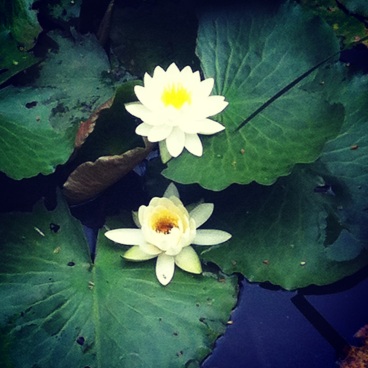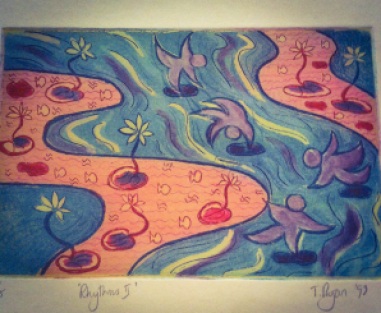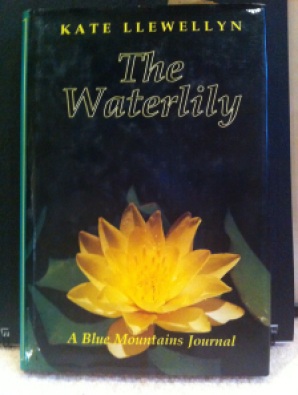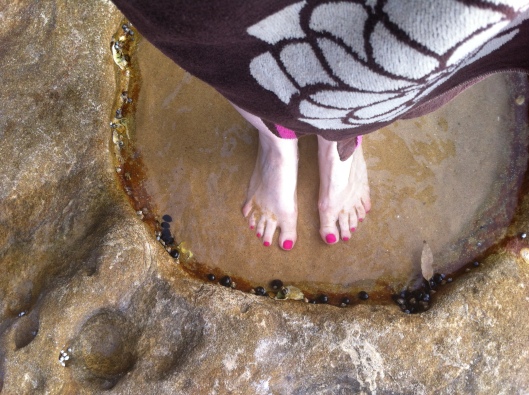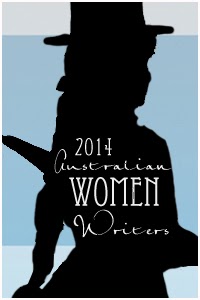
People have asked me how I get so much reading done. Here are my strategies for how to read for more creativity, pleasure and productivity.
On Quiet Writing, we share the threads that tie our wholehearted stories together. They can be passions, skills, values – anything we go back to over and over again in different ways.
One of the key golden threads that ties my story together is reading and a passionate love of books. My life has been a mosaic of loving reading, learning about it, teaching it and sharing this love with others.
In this post, I share my reading story and background in teaching reading and sharing its joys and skills. I reflect on my current approaches, providing strategies for reading more broadly and effectively for creative purposes and pleasure.
My reading story
I wrote in my last Creative and Connected about our unique blend and how the skills and experience we bring together make up our onlyness and contribution to the world. When I reflect on my onlyness, the art of reading, teaching people to read at and sharing this love shines out.
As a child I always loved books. I can remember being at school in Year 1 reading a story about The Cutty Sark. It’s my first memory of being a fluent, independent reader. I grew up in a house full of books and my father was an avid reader. On holidays, I can remember him reading Atlas Shrugged by Ayn Rand and The Source by James A Michener. He read Australian classics to me when I was young – Blinky Bill and Snugglepot and Cuddlepie and those stories still resonate.

I excelled at English, especially exploring books deeply and writing essays about them. I was headed for a career in journalism and communications but was put off by the more extraverted side of this. So I studied English and Education instead, enabling me to develop my love of reading and literature and also learn to share it. I studied primary education and focused on literacy. My Honours year featured research on literacy and language structures in early readers and whether they encouraged children to enjoy reading. I also researched the poetic reading experience and whether educators fostered a love of reading poetry.
Later, I completed a Diploma in Adult Education specialising in literacy. This focused on adults who had missed out on the ability to read and write well in their first language or who needed to learn it in English as another language. For nearly 20 years I taught in this field, teaching everything from how to read signs to working with apprentices on their trade courses to teaching speed reading and reading for tertiary and academic purposes. I gained a Masters in Language and Literacy specialising in English for Speakers of Other Languages where I learnt all about genre and social contexts.
Then, I became a leader in adult vocational education including working on strategic policy and advising Ministers and Government. My reading was all policy documents, reports, media and many emails! I also read about leadership, mentoring, competencies of leadership and Myers-Briggs Type Indicator as I built my leadership and self-leadership skills especially as an introvert.
And through all this time, I read for more personal enjoyment: for pleasure, for information and for productivity. I love to mix reading novels with reading that is more about personal development, learning and knowledge. Being an INTJ Myers-Briggs Type, Introverted Intuition is a dominant function. The ideas and symbols from books are a central organising principle in both my inner and outer life with pretty much everything stemming from that quiet reading time.
The many skills of being able to read
As my background shows, there are many skills of being able to read and many ways in which it plays out. Here are just some examples:
- functional reading – to get around and meet the basic needs of society
- content reading – reading for vocational areas, for a purpose such as a course
- reading for pleasure – focused on the pure experience and enjoyment of reading and books
- reading for information – reading to research, gain ideas, summarise, scan and skim
- academic reading – skills of reading literature and articles to summarise, argue a point, write an essay and come up with something new
- reading for social media – scanning, reviewing, liking, responding, connecting, visual reading
- reading for strategic purposes – policy, strategy, positioning, influencing, persuasion
And the truth is, we often mix them up to suit our reading purpose.
There’s also a kind of reading linked to creativity and productivity and ‘reading like a writer’. It’s something I am finding myself thinking about as I step into more fully embracing my writing life. It’s as if we need to bring all the many skills of being able to read together and apply them in a new way. This is especially so in this environment of social media and technological choices around how we read. So what does it mean to ‘read like a writer’?
Reading like a writer
Novelist V E Schwab takes the role of reading seriously in her job as a writer. In an interview on Caroline Donahue’s The Secret Library Podcast, she says:
About two/three years ago, I decided I wasn’t reading enough. I was really busy and I couldn’t find time…At the beginning of the interview I said “it’s not about finding time, it’s about making it.” And I realised that reading is a fundamental part of my job and not just in the, “Oh I need to know what else is selling and what else on the shelves.” It’s a fundamental part of becoming a better writer…”
V E Schwab describes a ‘story monster’ that lives inside her chest and the more stories she takes in, the cleverer it gets. The story monster provides intuitive guidance when writing, like a barometer, enabling her to feel the story. Reading broadly is the best way to ‘feed’ the story monster, and is a critical input into the writing process. She explains:
So I decided that reading needed to be treated like any other part of my job and needed to be something that I made time for, a commitment. And so I set out to read one hundred books a year. I always have one paperback, I always have an e-book and I always have an audiobook….I’m continually accompanied by narratives….It’s still difficult, I still have to work at it…but I’m just committed to it.
You can read V E Schwab’s summary of her year in reading for 2016 here. This interview and her committed approach to reading made me think about my own practices. It really helped me to hone my thinking about the various reading skills we bring into play, how we can vary our reading for creativity, pleasure and productivity and read like a writer.

How to read for more creativity, pleasure and productivity
Some of the hallmarks of reading for more creativity, pleasure and productivity including reading like a writer include: setting a target, accountability, variety, intent, making the most of the opportunity to read and making time.
Here are some strategies for reading for more creativity, pleasure and productivity. They are based on my knowledge and experience as well as tips from other committed readers including V E Schwab, Joanna Penn, Gabriella Pereira and Nick Hornby:
1 Read across different book formats
In line with V E Schwab’s strategy, read across book formats – hard copy, ebook and audiobook. I find I read differently and choose specific types of books for each format. I tend to use ebooks when I want to really study a book and make electronic highlights and notes. I’m listening to audiobooks on writing techniques and business for authors. And I like to relax and read for pleasure with the hard copy of a book in my hand. You can autosynch between devices including between ebook and audiobook. You might decide to go pretty well all digital as Joanna Penn has done. Find out what you like to read and how and mix it up!
2 Make time for reading
All the committed readers I know including myself make time for reading. They don’t watch a lot of television or they get rid of the TV altogether. Or they get used to reading with distractions! Social media is another time waster that takes away our reading time, so monitor that carefully. Find a way to weave reading into activities like driving and walking via audio books. It’s simply a case of committing to reading more and putting the strategies in place to make it happen.
3 Commit to reading goals for the year
One strategy that helps is to set a reading goal for the year such as 100 books a year as V E Schwab has done. You can also join book clubs or reading challenges with goals such as the Australian Women Writers Reading Challenge I have participated in over a number of years. I’m aiming to read 52 books this year. I know I need to be more organised in tracking my progress to this goal. I’m also aware I do a lot of reading that is not related to completing a book, but it’s still a goal worth shooting for or extending beyond.
4 Be accountable to your reading goals
Once you’ve set the goal, be accountable to it. My Creative and Connected posts each week are an opportunity to check in on my reading. It’s amazing how quickly the week rolls around and just being accountable keeps me focused. I could perhaps include a goal and tracking in my Creative and Connected post as a way of keeping an eye on progress and being more accountable. You can also keep track of your reading via Goodreads.
5 Read more than one book at a time
Probably one of the big changes in my reading habits is that I no longer read one book at a time. Reading across different formats has helped to break this limiting way of thinking. I’m now reading about 4 or 5 books at once. I read across formats depending on the circumstances. And I can pick up the book that best suits the time I have – like reading to relax at the end of the day rather than speeding up the mind with ideas. It might not be for everyone and there are times when you might want to read one book at a time, but it’s worth experimenting with.
6 Read across genres (mix it up)
Linked to both #1 and #5 is reading across genres and across fiction and non-fiction. There’s a fabulous list of genres here. V E Schwab reminds us of the value of reading broadly. If you’re writing a novel, read both inside and outside the genre you are writing in for new perspectives. If you like historical fiction, read the occasional fantasy novel. Have both fiction and non-fiction books on the go at once so you can choose what suits the moment best. Even if you love literary fiction, have lighter novels available to you so you can keep reading when you are not quite up to the more intense read.
7 Stop reading a book you don’t like
Another habit I’ve learnt to break is feeling that I need to finish a book even if I don’t like it. Nick Hornby in Stuff I’ve Been Reading says: “Read what you enjoy, not what bores you.” And in The Complete Polysyllabic Spree, he says of a boring book: “Please, please: put it down. You’ll never finish it. Start something else.” It’s good advice. It only slows you down and wastes your time.
8 Read actively: highlight, take notes, make reading lists
Reading actively helps keep you engaged so highlight, underline and take notes. Ebook options make it easy to highlight electronically and keep these documents as a single record. I keep notes in a large Moleskine journal too if I am reviewing a book, such as when I wrote about White Hot Truth. This more intensive reading can be time-consuming but it rewards you many times over in return as you engage deeply with an author’s message. In DIY MFA, Gabriela Pereira suggests actively making reading lists just as you would in a formal MFA (Master of Fine Arts) program.
9 Share your reading experiences
Share your reading experiences whether it be on Instagram, your blog or on Goodreads. Write reviews, share quotes, celebrate your library, participate in reading challenges, blog about genres that you love and why. Through my daily Tarot Narrative, I link books to a tarot story for the day which helps me to revisit the books in my library and share value from them. Others are appreciating this connection! Social media has been such a boon for sharing reading experiences, finding out about new books and reminding us of what we love.
10 Read like a writer
Gabriela Pereira in DIY MFA says that “Reading like a writer is like trying to figure out how a magician performs his tricks.” V E Schwab suggests a similar view on this when she talks about her ‘story monster’. It’s really about getting behind the scenes, under the hood and getting a feel for the narrative or structure of non-fiction. As Pereira goes onto say:
Because the moment you figure out how the author pulled off her trick, you’ll be able to start applying it to your own work.
11 Read about reading
And finally, read about reading and take the time to reflect on your reading journey just as I have done here. Seek out books that help you take a meta view of your reading patterns and skills and how to extend them. Connect with those that seek to spread the pleasure and joy of reading through reviews and sharing information about books.
I’m preparing two special reads about reading coming soon:
- Creative and Connected this Friday will feature a round up of books about reading and celebrating reading: the art, history, process and joy of it. So look out for that!
- I’m working on a free ebook on reading as creative influence. It’s about the books that have influenced my story, so sign up to Quiet Writing to be the first to receive it once it’s released this month! Just pop your email in the box on the right.
And whilst I’ve talked about reading more in some ways, it’s not always about quantity. Reading more creatively, productively and enjoying it is always a valuable goal, regardless of volume. A message that resonated in my recent coaching training is to honour our spend, making sure we carve out space to apply what we read and implement the knowledge.
Thanks for reading. I hope this has been useful and of interest.
Share your thoughts on how you read more or differently for reading, creativity and pleasure – would love to hear! You can respond via the Comments here or on Facebook.
Keep in touch & free ebook on the ’36 Books that Shaped my Story’
Reading is a great love of mine – you can get my free 95-page ebook on the 36 Books that Shaped my Story – just sign up with your email address in the box to the right or below. You will also receive updates from Quiet Writing and its passions. This includes personality type, coaching, creativity, writing, tarot and other connections to help express your unique voice in the world.
Quiet Writing is on Facebook and Instagram – keep in touch and interact with the growing Quiet Writing community.
If you enjoyed this post, please share via your preferred social media channel – links are below.
You might also enjoy:
Practical tools to increase writing productivity
20 practical ways of showing up and being brave (and helpful)




 Working out what to read next is always a challenge. But books by Australian women writers are always on my mind and that’s in no small measure due to the
Working out what to read next is always a challenge. But books by Australian women writers are always on my mind and that’s in no small measure due to the 


